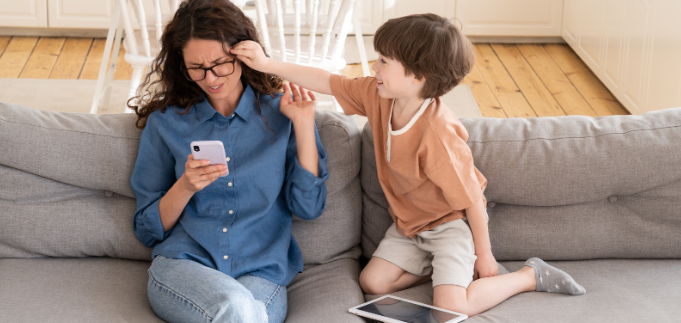After 10 years of 'gentle' parenting, mother of two admits why she got it all wrong
"High warmth is beautiful. But without structure? It creates anxiety."
A frustrated mom helps her daughter with homework.
Over the past 15 years or so, a trend known as gentle parenting has gained popularity among mostly millennial parents. The parenting style emphasizes emotional validation, empathy, respect, and understanding over punishment. Proponents of gentle parenting say it promotes healthy bonds between parent and child as well as emotional intelligence and confidence.
However, critics of gentle parenting say that it can easily slip into becoming permissive parenting, where boundaries erode. It can also lead to children growing up with difficulty following orders or anyone telling them "no."
Jaclyn Williams, a graduate student in clinical mental health counseling who specializes in child and adolescent therapy, recently kicked the parenting hornet’s nest with a viral Instagram reel in which she laments raising her two children with gentle parenting over the past 10 years.
What's wrong with gentle parenting?
In the comments, Williams recounts her journey, admitting she backslid from gentle to permissive parenting. This led to a lack of boundaries and had profound impacts on her children. One child became a people-pleaser who suppressed their real feelings, absorbed everyone’s emotions, and became withdrawn. The other became anxious, insecure, neglected, and emotionally dysregulated.
The changes became profound after Williams moved her family across the country and began easing up on the rules. "I felt like I was protecting them or really just letting them feel all their feelings, but what ended up happening was they were looking at me to help them regulate and for safety and security, not join them in their feels," Williams told Newsweek. "My kids were longing for the safety, security, and structure—a leader, so to say."

Seeing the results of her parenting style, Williams shifted to an authoritative style, emphasizing high warmth (connection, validation, empathy) and high structure (clear boundaries, consistent limits, natural consequences). Soon she saw her kids become less anxious, more confident, less entitled, and better at regulating their emotions.
Williams' post received significant criticism from parents who practice gentle parenting, many of whom argued that her issues stemmed from being too permissive. "Thank you for acknowledging the fact that what you did was permissive parenting, not gentle parenting. Gentle parents still hold hard boundaries," BareFootNTP wrote. But Williams stuck by her post, adding that it’s very easy for gentle parents to backslide.
Gentle parenting can become permissive parenting
"The point is to show how easily it is to slip into permissive parenting, especially when life happens. Everyone is so quick to defend gentle parenting; nobody is seeing the human side. A first-time mom trying her best, dealing with their own childhood issues, guilt, shame, anxiety, depression, and trying to raise those sweet babies better.... the point is to help others and create space for understanding, empathy, and compassion," she wrote in the comments.
Williams posted a follow-up video to double down on her change in parenting style.
In the comments, Williams noted that many gentle parents who achieved similar outcomes reached out to her. "Here's what I want you to know: You didn't mess it up," Williams wrote. "High warmth is beautiful. But without structure? It creates anxiety. And nobody told you that."
- Study reveals parents who 'gentle parent' may have higher stress levels than those who don't ›
- Millennial's funny attempts to teach her boomer mom gentle parenting has people rolling ›
- Gentle parenting: You're doing it wrong. Watch how it's supposed to look. ›
- People are losing it at this millennial teaching her boomer mom about 'gentle parenting' ›
